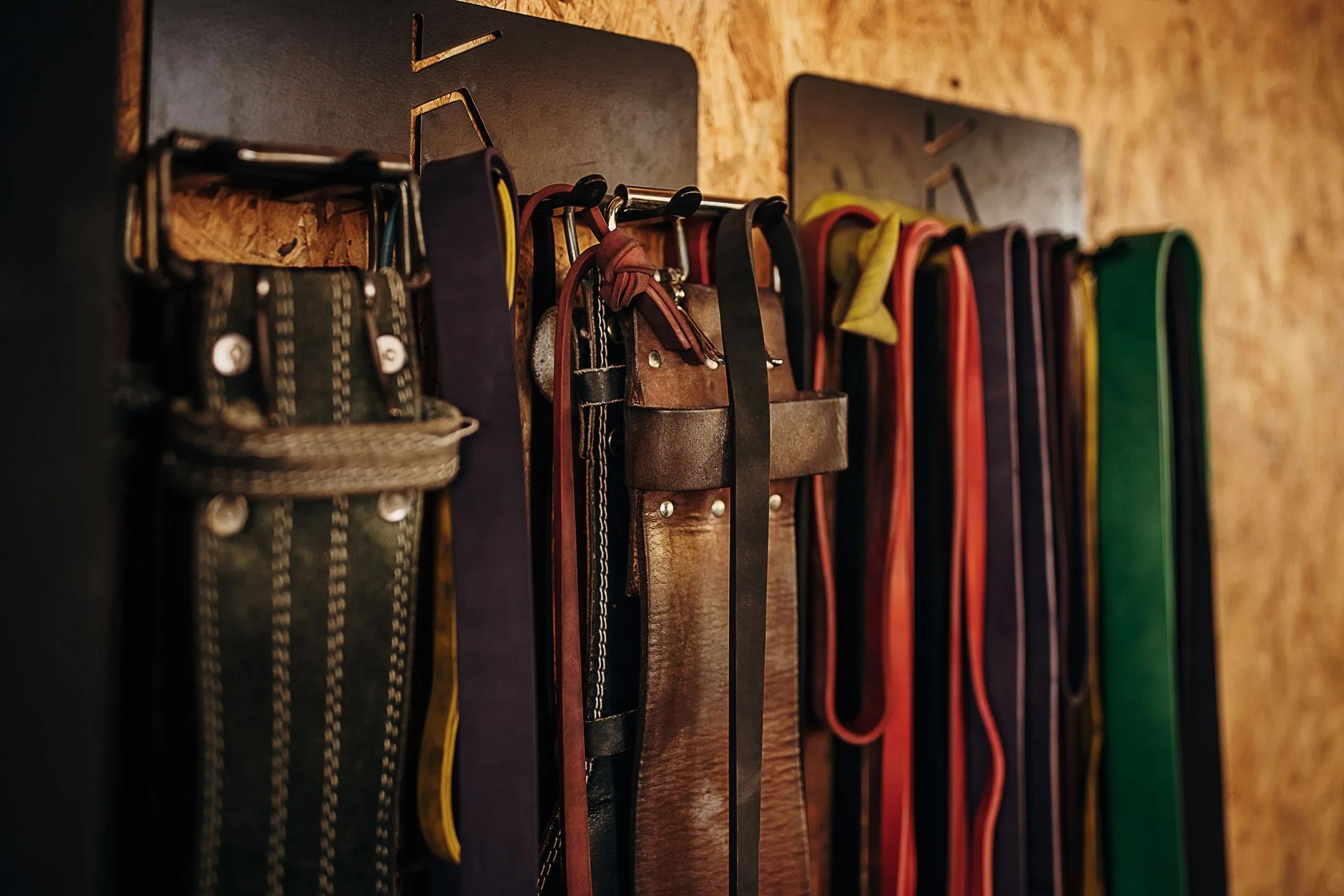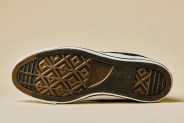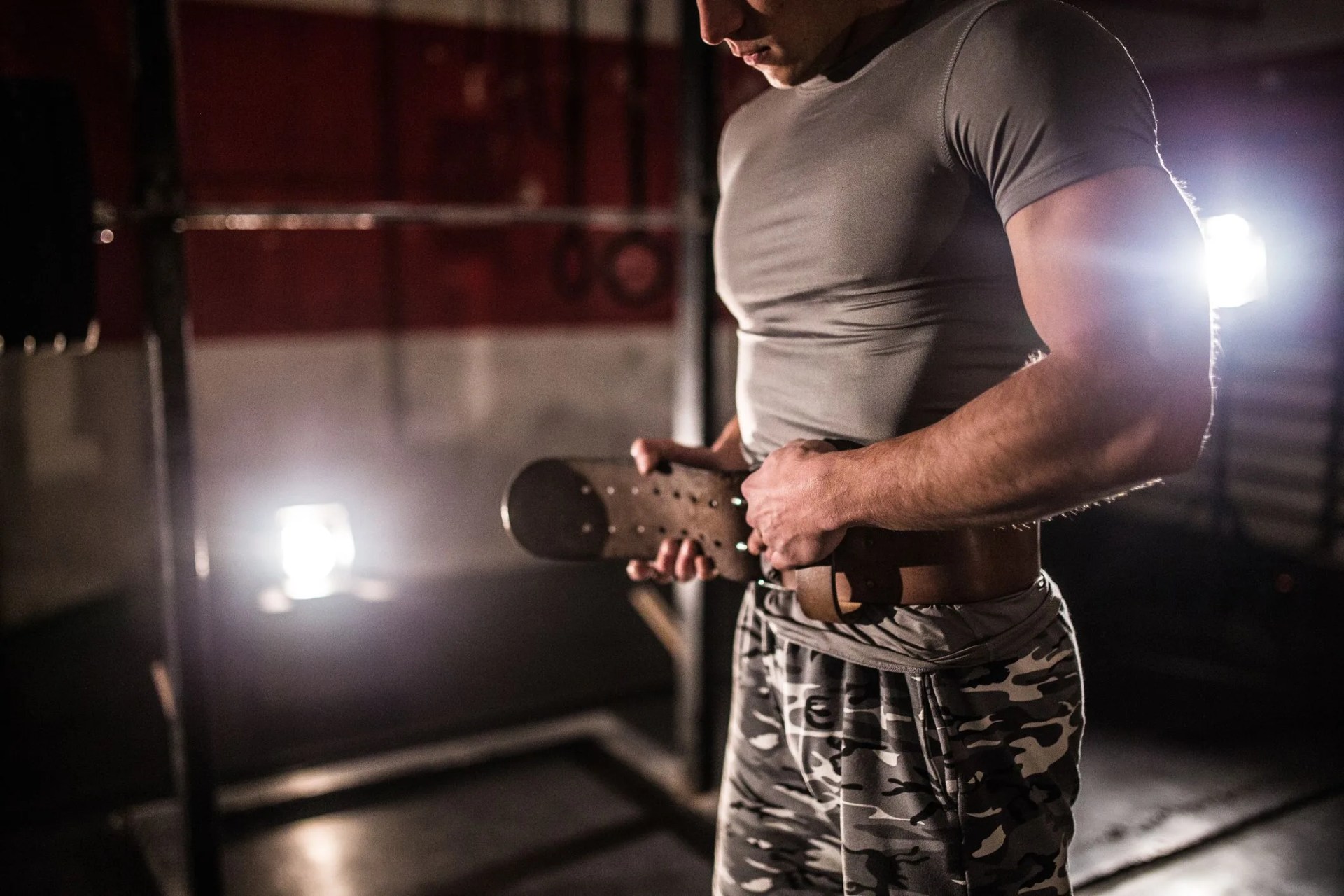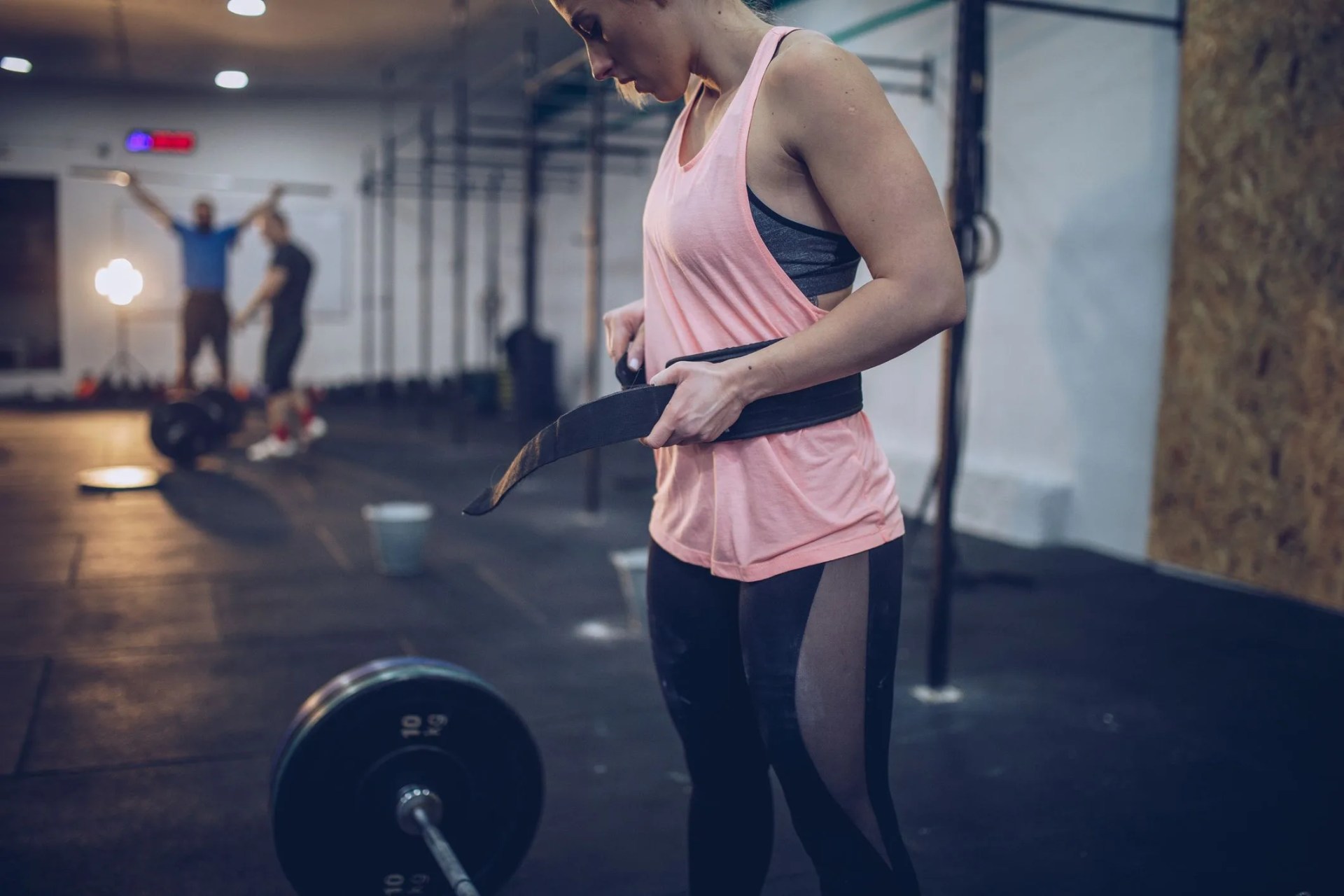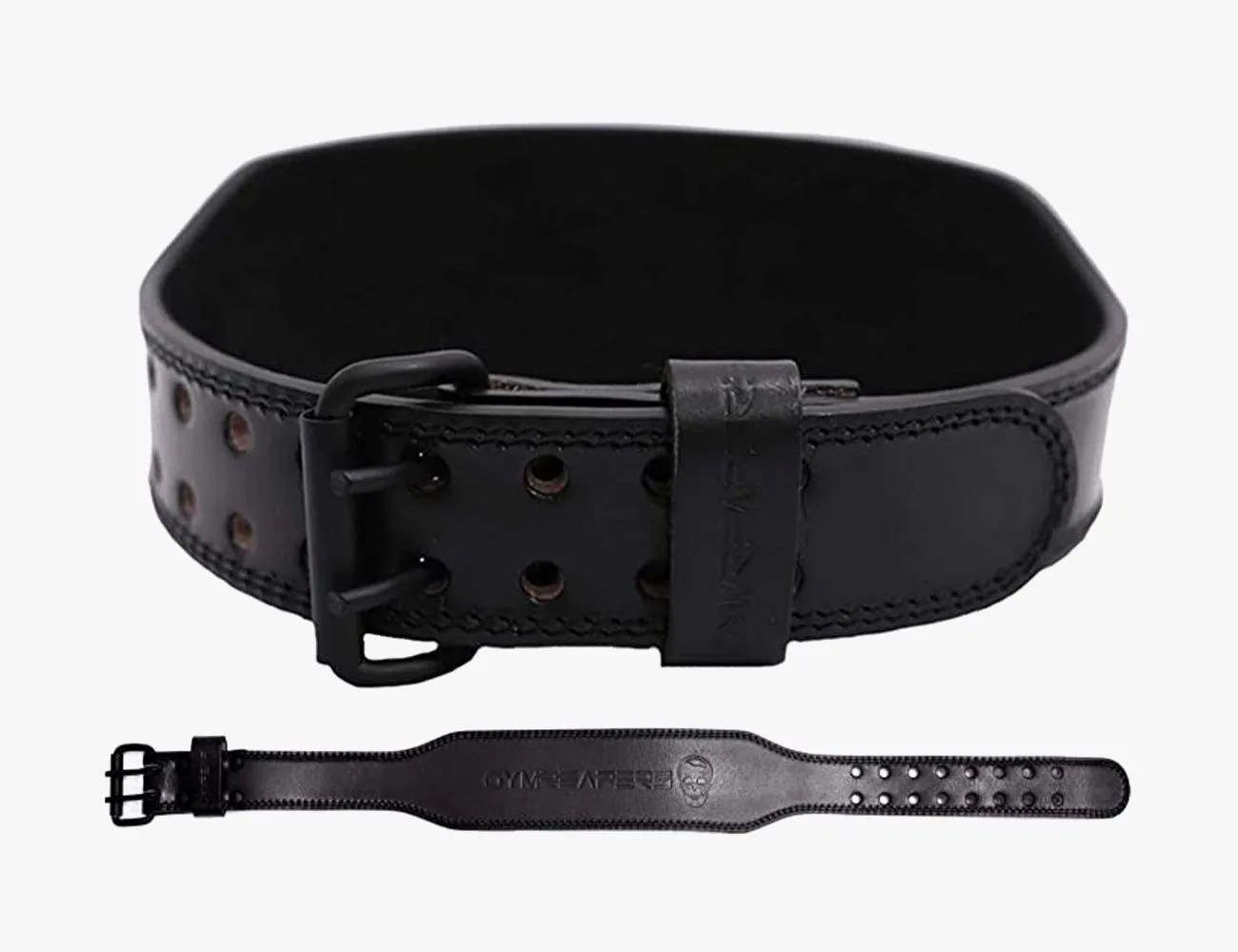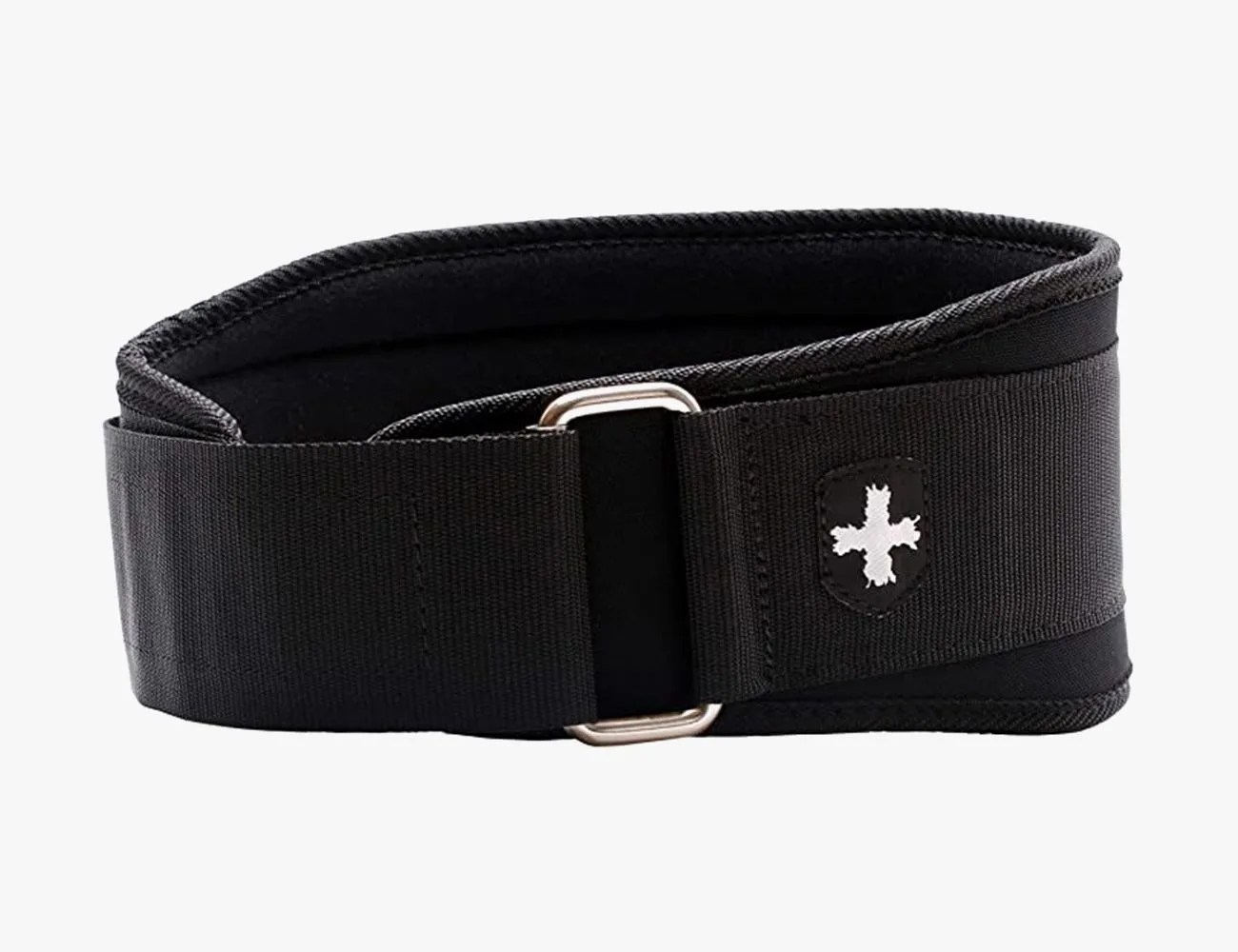Every small gym or training center has that corner — an isolated, dusty area where forgotten fitness equipment goes. On this island of misfit training toys, you’re likely to find a beat-up kettlebell or two, an arbor of resistance bands, barbells of PRs past … and a mix of worn-in weightlifting belts.
Unlike the Bass Pro truckers or perfectly-cut stringer tanks you’ll see, weightlifting belts are not a fitness fashion statement. Rather, they’re a great tool for getting the most out of your strength training. After all, there’s a reason you see professional strength athletes stepping to the platform wearing these thick straps around their midsection.
But weightlifting belts are a tool, after all, and in order to use them properly, you need to know when and how to reap the benefits. You wouldn’t use a hammer to cut a board, would you?
We spoke with professional weightlifter and owner of PFP Barbell Tom Duer to get the backstory on this back-supporting accessory. Here’s when, how and why you should add a lifting belt to your list of essential training gear.
What Does a Weightlifting Belt Do?
Lifting belts aren’t there to keep your training shorts from falling down. Rather, their purpose is to add rigidity and bracing support for lifts that require a stable core and back. When you squat, deadlift or perform olympic lifts, you want your core to be rigid for stability, so you can successfully move the weight with less risk of injury.
“To put it in as simple of terms as possible, the belt is there for our stomach to press against to help us stabilize our midsection,” Duer says. “It’s something to push against as we brace ourselves for those big lifts.”
